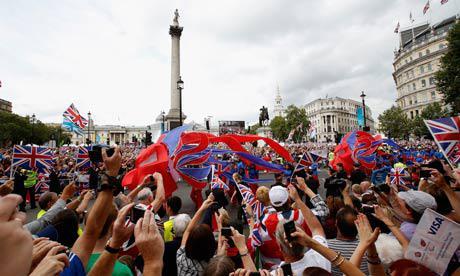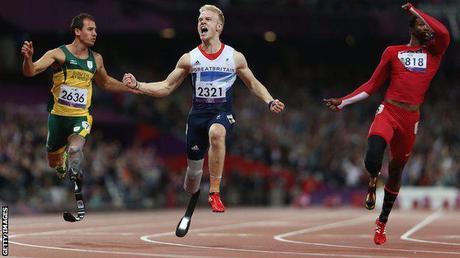
Wasn’t the Olympic and Paralympic athletes’ parade across central London the other day just brilliant?
For me, the 2012 Paralympics has turned out to be enlightening, affecting and relevant – almost more so than its older mainstream sibling. The Olympics might have had the bigger stars (I haven’t forgotten you, Andy Murray), but what I loved about the Paralympics was the inclusive nature of its sports, which enabled their athletes to showcase their talents with as few of the stressful barriers that other people with disabilities experience in everyday life as possible.
I was also fascinated by the Lexi Decoder, a visual classification tool featured on Channel 4 that pitted those with fairly similar disabilities against each other as far as possible in events that they both specialised in and were suited to according to function and ability. Thus we had blind football, wheelchair basketball and rugby, and something like 16 different classes for the 100m.
Track events were in fact of the most interest to me, because athletes could be classed for the sport according to the type, spread and severity of cerebral palsy they had. They had eight classes for that disability alone – some of which had no event of their own, so they had to be teamed with another class in order to compete (eg. T33/34). This enabled me to identify the differences in action and consider which class Isobel would most likely be in if she was competing in the Paralympics.
One factor I took into consideration was that many of the athletes’ disabilities didn’t appear as severe as their class deemed them to be, because once they’d learnt to overcome them, they then flourished as natural athletes through years of hard training.
Now, I can’t overstress this significant point enough. Just because these athletes can do it, doesn’t guarantee that Isobel can. Just like we can’t all be like Chris Hoy, Jessica Ennis or Mo Farah, people with disabilities can’t all be like David Weir, Ellie Simmonds or Jonnie Peacock.
It’s not just about being ‘too disabled’, although some will certainly have bigger day-to-day challenges than others. They could just not be interested in sport; maybe it’s not where their real talents lie. Maybe they see themselves as ordinary people who happen to have a disability. And it’s nobody else’s prerogative, but theirs, to decide what’s right for them – after all, they’re the ones living with the disability, not you.
“If they can do it – so can you”? Scrap that. Unless the child has a genuine passion for sport and shows raw talent, it’s disrespectful of that child’s right to be an individual human being.
That Peacock, Simmonds et al have very different disabilities is besides the point. Just like the Olympians, the Paralympians are international elite athletes who beat thousands of other athletes to get into the London stadium this year because of sheer talent and perseverance. Just look at Jonnie Peacock’s storming win in the men’s T44 100m. What’s to stop future Paralympians upping their own game?

What the Games did show me was the ultimate possibilities of what a person with cerebral palsy could achieve on the track. It gave me a glimpse of what Isobel’s own CP could look like in adulthood.
Knowing what we know so far, it seems that Isobel’s closest match in the 100m depends largely on a. whether she will become ambulant as a grown-up, b. how much gross and fine motor control she will have by then, and c. whether the few tiny, involuntary movements she has in her arms will become more pronounced. Right now, it’s a toss-up between T34 (Hannah Cockroft), T35 (Sophia Warner), or T36 (Ben Rushgrove).
And hereby lies the crux of the matter. The diversity of its classes highlight how massively fluid CP can be in its evolution, and how difficult it is for paediatricians to predict its long-term outcome. Hannah Cockroft had two heart attacks at birth; at that point, there was no telling she would go on to win double gold at the Games.
That is the kind of possibility that the Paralympics have shown me. That they have increased the visibility of a vast array of disabilities over 11 days is even more reassuring to parents like me, who are still learning about our children’s CP.

